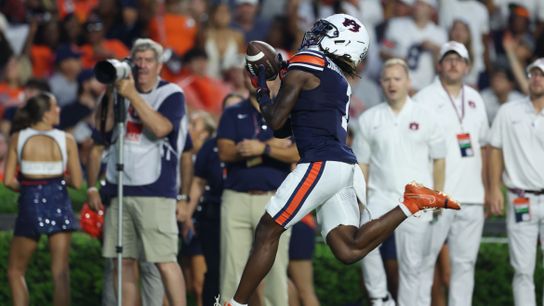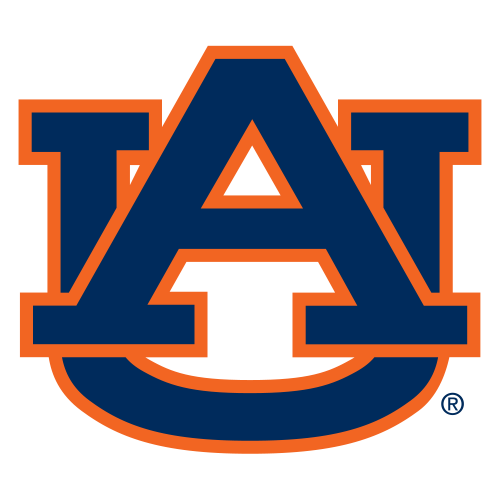
Eric Singleton Jr.
height
5'10"
weight
178
position rank
14
overall rank
99
team
Auburn
conference
SEC

2024 STATS
Based on 12 games played
56Rec
754Rec Yards
3TDs
13.5Y/R
Top Traits
Eric Singleton Jr. Scouting Report
Eric Singleton Jr. is an electric, alignment-versatile receiver who can create explosive plays.
Draft Grade: Round 4 - Developmental Traits
Strengths:
Explosive Plays: Whether it's catching a short pass and converting it to a big gain or catching a deep pass, Singleton can create explosive plays for an NFL offense.
Quickness: Singleton’s quickness allows him to create separation running routes and also force missed tackles when he has the ball in his hands.
Speed: Singleton appears to have the straight-line speed to run past defensive backs and begin to put separation between himself and defenders consistently.
Versatility: Singleton can be used as an outside receiver, in the slot, or in motion to execute jet sweep handoff-type plays.
Concerns:
Size: NFL franchises may have an issue with Singleton's overall size and may believe this will limit his role within their offense.
Catch Radius: Due to Singleton's limited length, he doesn't have a wide catch radius, which may limit quarterbacks’ opportunities to throw a 50/50 target to him.
Eric Singleton Jr. Summary/Projection:
Eric Singleton Jr. is a junior receiver prospect who started his collegiate career at Georgia Tech. Singleton spent two years at Georgia Tech, where he became one of the best receivers in the ACC before transferring to the University of Auburn. Singleton, as a receiver, has electric speed that sets the stage for his versatility and overall effectiveness as a receiver prospect.
Singleton would fall in the undersized category, but due to his speed, he compensates for it. Singleton, although undersized, can align on the outside as a receiver and also in the slot. Singleton can also be utilized as the X-factor gadget player that goes in motion and can do different things creatively on offense.
Regardless of alignment, Singleton uses his speed and quickness in his releases to quickly defeat press situations and get into his route. Singleton appears to have the overall quickness to take advantage of undisciplined defensive backs who are overaggressive in press and win immediately. Into his route, Singleton is a full-speed, quick accelerator that reaches top-end speed quickly. This puts defensive backs into panic situations where they often bail immediately, which creates space for him to win consistently in the short to intermediate portions of the field. Singleton has great start/stop ability, which allows him to get in and out of routes with great change of direction and body control. Singleton, as a route runner, has the entire route tree available to him and can get to the necessary spot with precision and speed.
Singleton, receiving the ball, appears to have good ball-tracking ability and can track the deep ball over his shoulder to catch the ball and continue running. He also has the awareness to stop near the sideline and keep his feet in bounds to make the catch successfully. Singleton has great overall body control to twist and torque his body in different directions to adjust to the football. Once Singleton has the ball in his hands, he converts into a difficult tackle for defenders. In the open field or tight, condensed spaces, Singleton has the elusiveness and lateral agility to make defenders miss and pick up extra yardage. Singleton is the type of athlete that should be accounted for, and defenses should want multiple defenders around him ready to tackle him. Singleton overall shows to be a reliable target in the slot that can win consistently while also giving valuable reps as an outside receiver.
Singleton’s main concern as a receiver would be his size. His lack of size impacts his overall catch radius and brings into question whether he can win against corners who have good length on the outside. His size may also force him to play more of the slot role, as NFL offenses may have receivers on their team that fit more of the X or Z role from a size perspective.
Comments

Want to join our comment section?
Subscribe to TDN Premium!
Members enjoy an ad-free website experience, a members-only comment section, exclusive content, Discord access, and special Mock Draft Machine privileges (when it returns).
We’d love to have you join the conversation!

